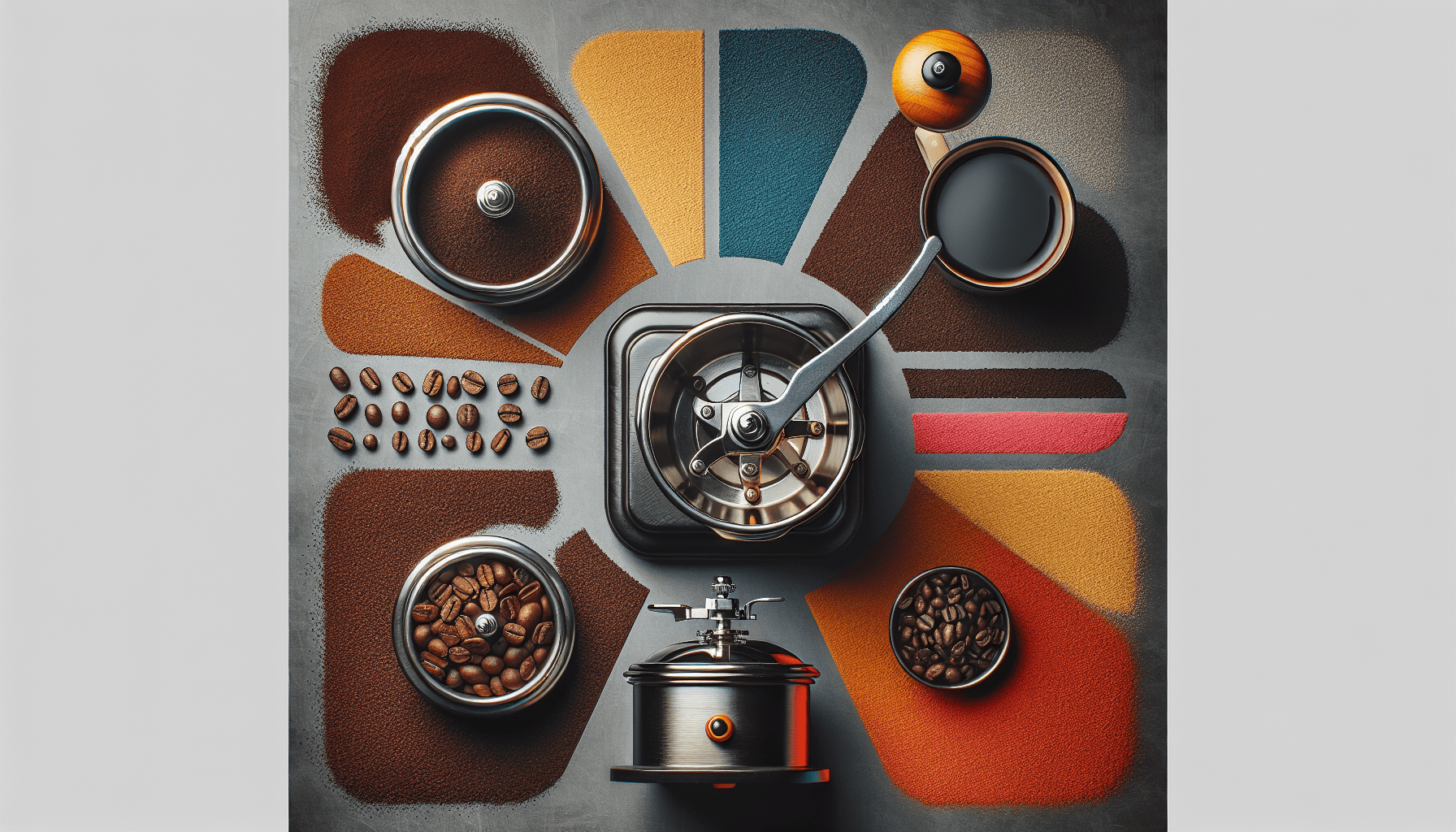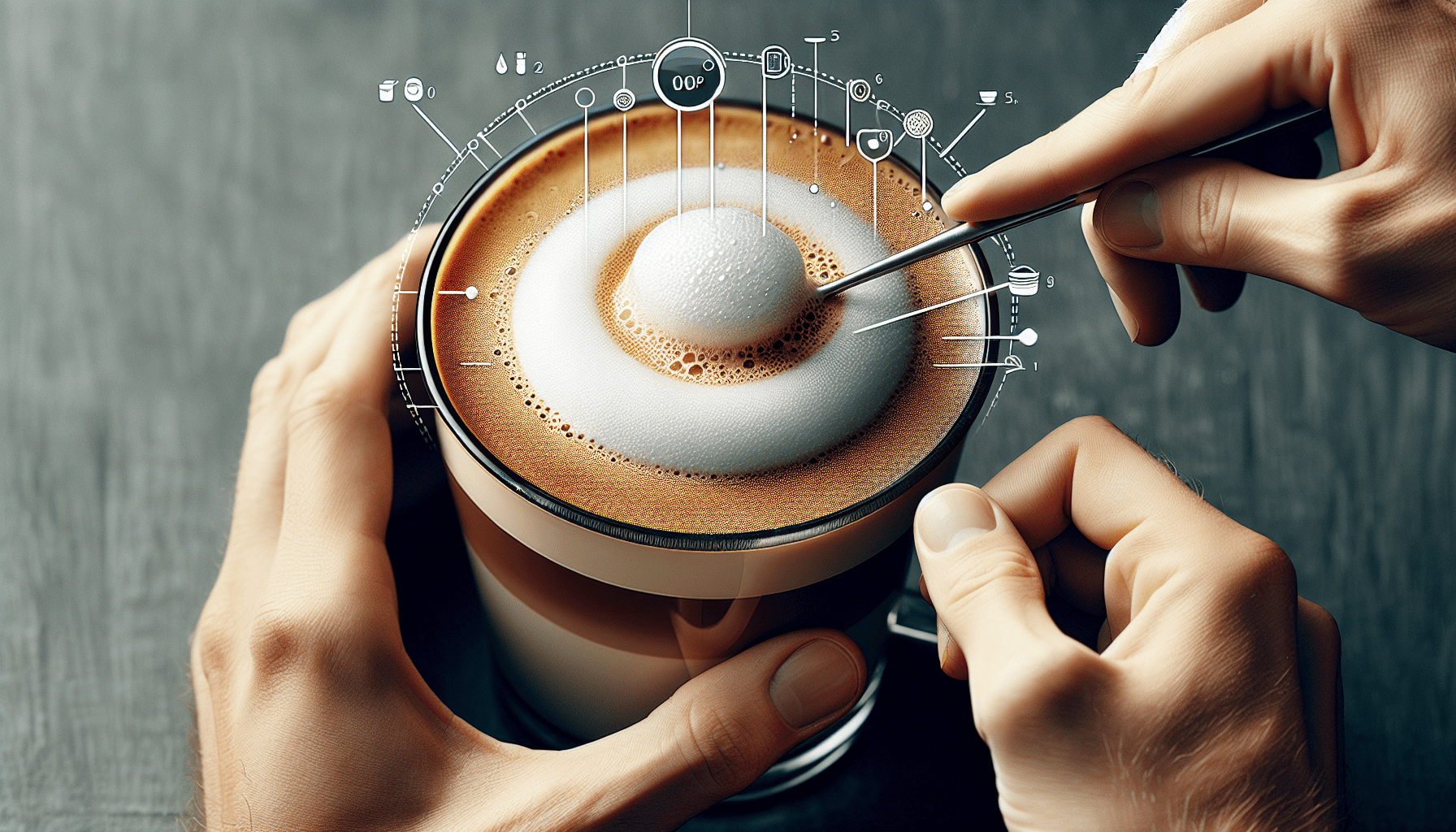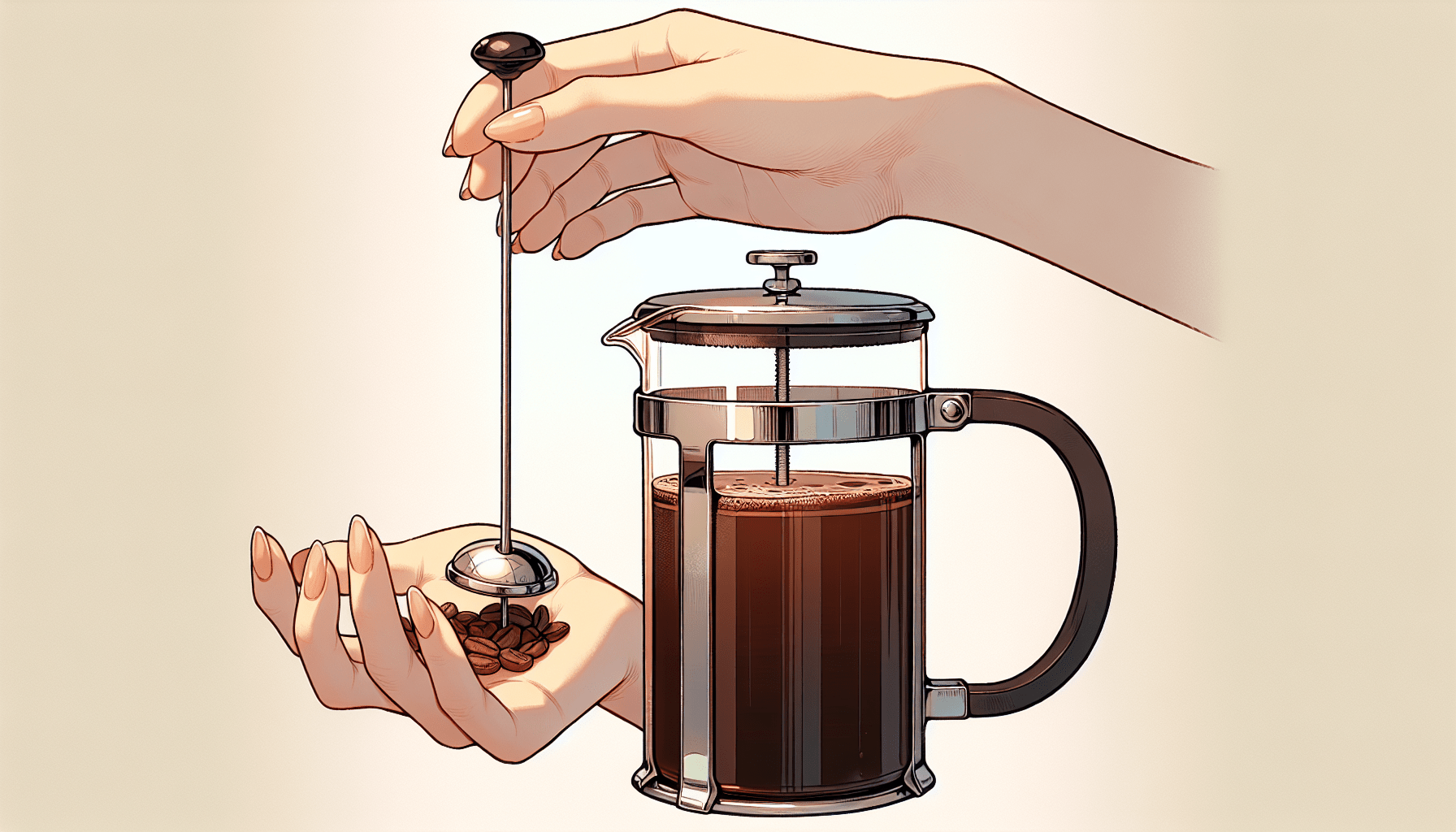So, you’ve got yourself a French press. The temptation to dive into the world of rich and bold coffee flavors is just too tempting. But hold on a minute! Before you start brewing, it’s always good to be aware of the common mistakes people make when using a French press. From using the wrong grind size to forgetting to preheat the press, these little slip-ups can really affect the taste and quality of your coffee. But fret not, my friend, because in this article, we’ll walk you through some of these mistakes and show you how to avoid them. Get ready to brew that perfect cup of French press coffee!
1. Using the wrong grind size
Using a grind that is too coarse
One common mistake when using a French press is using a grind that is too coarse. This can result in under-extracted coffee, where the water doesn’t extract all the flavors and aromas from the coffee grounds. As a result, the coffee may taste weak and watery.
Using a grind that is too fine
On the other hand, using a grind that is too fine can lead to over-extraction. The water can pass through the grounds too quickly, extracting too much bitterness from the coffee. This can result in a harsh and bitter taste that is far from enjoyable.
Not adjusting the grind size to the desired strength
It’s essential to adjust the grind size according to your desired strength. If you prefer a stronger cup of coffee, you may want to use a finer grind size. If you prefer a milder cup, a slightly coarser grind might be more suitable. Experiment with different grind sizes to find the right balance for your taste preferences.
2. Incorrect coffee-to-water ratio
Using too much coffee
Using too much coffee in your French press can lead to an overpowering and overly strong brew. The excess coffee can overpower the water, resulting in a bitter and intense flavor that might not be to everyone’s liking. It’s essential to follow the recommended coffee-to-water ratio for a balanced and flavorful cup of coffee.
Using too little coffee
On the other hand, using too little coffee can result in a weak and diluted brew. The flavors may not be as pronounced, and the coffee may lack the richness and complexity that comes with the proper coffee-to-water ratio. It’s crucial to measure your coffee accurately to ensure a satisfying cup of coffee.
Not measuring the water accurately
In addition to measuring the coffee accurately, it’s essential to measure the water as well. Using too much water can dilute the coffee and make it taste weak, while using too little water can result in an overly strong and concentrated brew. Invest in a reliable coffee scale or measuring cup to ensure you are adding the right amount of water for a well-balanced cup of coffee.
3. Neglecting the importance of water temperature
Using water that is too hot
Using water that is too hot can result in a burnt and bitter taste. The high temperature can over-extract the coffee and extract undesirable compounds, leading to an unpleasant flavor experience. It’s crucial to let the water cool for a few seconds after boiling, aiming for a temperature between 195°F and 205°F (90°C and 96°C).
Using water that is not hot enough
Conversely, using water that is not hot enough can lead to under-extraction. The water may not extract all the flavors from the coffee grounds, resulting in a weak and lackluster cup of coffee. Make sure to use water that is hot enough to reach the optimal extraction and release the full potential of the coffee beans.
Not allowing the water to reach the optimal temperature before pouring
To ensure a consistent and flavorful brew, it’s important to allow the water to reach the optimal temperature before pouring it into the French press. Give the water a few minutes to cool down after reaching boiling point to ensure it’s within the recommended temperature range. This step may seem small, but it can make a significant difference in the taste of your coffee.
4. Insufficient steeping time
Not allowing the coffee to steep for a long enough time
The steeping time is crucial in a French press as it allows the flavors to fully develop before plunging. Not giving the coffee enough time to steep can result in a weak and under-extracted brew. The coffee may lack depth and complexity, leaving you with a subpar cup of coffee. It’s recommended to steep the coffee for around four minutes for optimal results.
Oversteeping the coffee
On the other hand, oversteeping the coffee can lead to over-extraction and a bitter taste. Leaving the coffee in the French press for too long can extract unwanted bitterness and undesirable compounds from the grounds. It’s essential to find the right balance and avoid leaving the coffee sitting in the French press for an extended period.
Not following the recommended steeping time for different coffee varieties
Different coffee varieties may require different steeping times. Lighter roasts may need slightly shorter steeping times to prevent over-extraction, while darker roasts may benefit from a slightly longer steeping time to enhance their flavors. It’s worth experimenting and adjusting the steeping time based on the specific coffee beans you’re using to achieve the best results.
5. Plunging too quickly or too slowly
Plunging the French press too quickly, causing grounds to escape into the brew
When plunging the French press, it’s important to maintain a steady and controlled pace. Plunging too quickly can cause the coffee grounds to escape into the brew, resulting in a gritty and unpleasant cup of coffee. Take your time and press the plunger down slowly and evenly to prevent any grounds from making their way into the final brew.
Plunging the French press too slowly, resulting in overextracted and bitter coffee
On the contrary, plunging the French press too slowly can lead to over-extraction. The extended exposure to the water can extract more bitterness from the coffee grounds, resulting in a bitter and unpleasant taste. Aim for a steady and consistent plunge to avoid over-extracting your coffee.
Not maintaining a steady and controlled plunge
Consistency is key when it comes to plunging a French press. Maintaining a steady and controlled plunge ensures that the extraction process is even and consistent. Plunging too aggressively or inconsistently can lead to uneven extraction and affect the overall taste of your coffee. Take your time and maintain a steady pressure to achieve a balanced brew.
6. Neglecting to pre-warm the French press
Not preheating the French press with hot water before brewing
Pre-warming the French press is essential to maintain the brewing temperature and ensure a consistent extraction. Not preheating the French press with hot water before brewing can result in a decrease in brewing temperature. This can impact the final flavor of the coffee, leading to a less enjoyable cup. Pour some hot water into the French press, let it sit for a minute or two, and then discard the water before adding your coffee grounds.
Failing to warm the French press adequately, leading to a decrease in brewing temperature
In addition to preheating the French press, it’s crucial to warm it adequately. Failing to warm the French press enough can result in a significant decrease in brewing temperature. This drop in temperature can affect the extraction process and prevent the coffee from reaching its full potential in terms of flavor and depth. Take your time to ensure that the French press is adequately warmed before starting the brewing process.
7. Pouring coffee unevenly
Pouring the coffee too quickly, causing uneven extraction
When pouring the brewed coffee from the French press, it’s important to maintain a steady and even pour. Pouring the coffee too quickly can result in uneven extraction, as some parts of the coffee may be over-extracted while others remain under-extracted. This can lead to an imbalanced and inconsistent cup of coffee. Aim for a controlled pour to ensure even extraction throughout the brew.
Pouring the coffee too slowly, resulting in overextraction
Conversely, pouring the coffee too slowly can lead to over-extraction. The prolonged contact between the brewed coffee and the coffee grounds can extract more bitterness and undesirable compounds, resulting in a bitter and harsh taste. Find a balance by pouring the coffee at a moderate pace that allows for even extraction without over-extracting.
Not pouring the coffee in a circular motion to ensure even distribution
To promote even extraction and distribution of flavors, it’s important to pour the coffee in a circular motion. This technique ensures that each part of the coffee is evenly saturated and extracted. Avoid pouring the coffee in one spot or in a linear motion, as this can result in uneven extraction and affect the overall taste of your brew.
8. Not cleaning the French press properly
Leaving coffee grounds in the French press after use
Properly cleaning the French press is essential to maintain the quality of your brews. One common mistake is leaving coffee grounds in the French press after use. The leftover grounds can impart unwanted flavors and oils into subsequent brews, affecting the taste and aroma of your coffee. Make sure to empty and remove all the coffee grounds from the French press after each use.
Not rinsing the French press thoroughly to remove coffee residue
In addition to removing the coffee grounds, it’s important to rinse the French press thoroughly to remove any coffee residue. The lingering residue can build up over time and contribute to off-flavors and a decrease in the quality of your brews. Rinse the French press with hot water, making sure to clean all surfaces, including the mesh filter and plunger.
Neglecting to disassemble and clean all parts of the French press regularly
To ensure a deep and thorough cleaning, it’s important to disassemble and clean all parts of the French press regularly. This includes removing the plunger, mesh filter, and any other removable components. Clean each part separately, making sure to remove any trapped coffee particles or oils. Regular cleaning helps maintain the longevity of your French press and ensures consistent and flavorful brews.
9. Using low-quality or stale coffee beans
Using coffee beans that are past their prime and lacking in flavor
The quality of the coffee beans used in a French press significantly impacts the taste and overall experience. Using coffee beans that are past their prime and lacking in flavor can result in a dull and uninspiring cup of coffee. It’s important to use freshly roasted beans for the best results and to ensure that the flavors and aromas are at their peak.
Choosing low-quality coffee beans that result in a subpar brew
In addition to freshness, the quality of the coffee beans is crucial. Choosing low-quality beans can lead to a subpar brew with undesirable flavors and aromas. Invest in high-quality coffee beans, preferably from reputable sources or local roasters, to enhance the overall coffee experience and enjoy the full potential of your French press.
Not storing coffee beans properly to maintain freshness
Proper storage of coffee beans is essential to maintain their freshness and flavors. Storing coffee beans in the wrong conditions can result in a decrease in quality and taste. It’s important to store coffee beans in an airtight container in a cool, dark, and dry place. Avoid exposure to light, heat, moisture, and strong odors, as these can all accelerate the degradation process and compromise the flavor of the coffee.
10. Overlooking the importance of the coffee bloom
Not allowing the coffee grounds to bloom by pouring a small amount of water initially
The coffee bloom refers to the release of carbon dioxide gas from freshly roasted coffee grounds when hot water is poured over them. This bloom is an essential part of the brewing process and contributes to the overall flavors and aromas of the coffee. Not allowing the coffee grounds to bloom by pouring a small amount of water initially can result in a less flavorful and aromatic cup. To ensure a full bloom, add a small amount of water to the coffee grounds, allow them to bloom for about 30 seconds, and then continue with the brewing process.
Not giving the bloom enough time to fully develop before adding the remaining water
After the initial bloom, it’s important to give it enough time to fully develop before adding the remaining water. Rushing this step can lead to a lack of flavor development and a weaker cup of coffee. Patience is key to ensure that the bloom has enough time to release its full potential in terms of flavors and aromas.
Neglecting to stir the bloom gently to ensure even saturation
It’s crucial to gently stir the bloom after adding the initial water to ensure even saturation of the coffee grounds. Neglecting to stir the bloom can result in uneven extraction and a less balanced brew. Use a spoon or a coffee stirrer to gently stir the coffee grounds, making sure that all grounds are thoroughly saturated and no dry spots remain.
In conclusion, using a French press can be a rewarding and enjoyable way to brew coffee. However, it’s important to avoid these common mistakes to ensure the best possible cup. Remember to consider the grind size, coffee-to-water ratio, water temperature, steeping time, plunging technique, pre-warming, pouring, cleaning, coffee bean quality, and the coffee bloom. By paying attention to these factors and making slight adjustments, you can elevate your French press brewing experience and savor every sip of your rich and flavorful coffee. Happy brewing!




